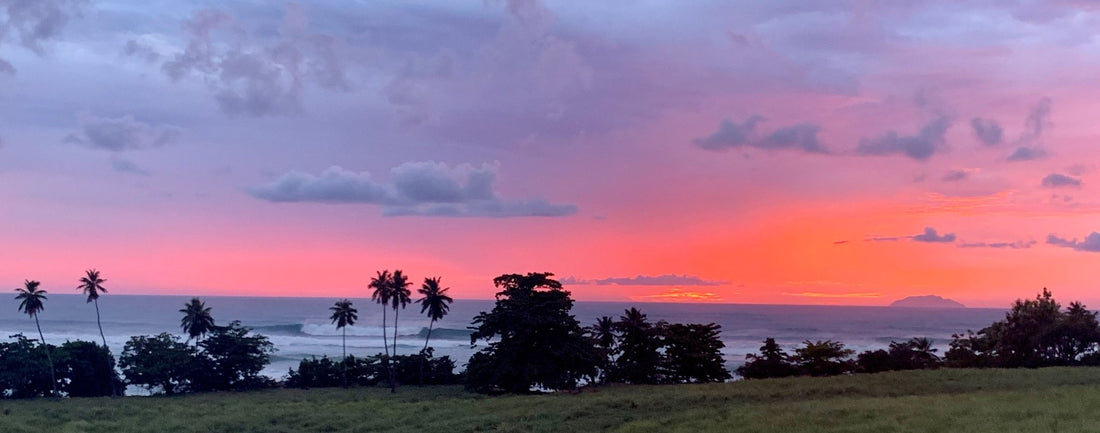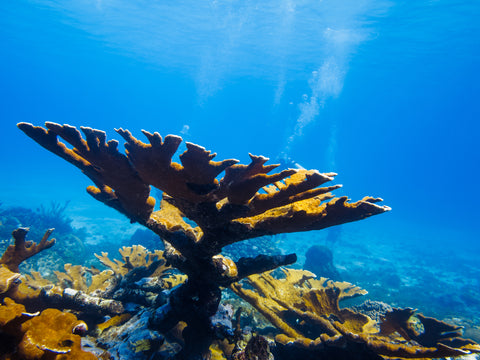
Guide to Tres Palmas Marine Reserve
Welcome to our blog! Today, we're thrilled to share with you all about the Tres Palmas Marine Reserve - a hidden gem located in beautiful Rincón, Puerto Rico. This reserve is not only one of the most beautiful and pristine natural wonders of the Caribbean but also one of the most important marine reserves in the world. In this post, we'll explore the history of Tres Palmas, its unique features, and why it's a must-visit destination for any tourist or marine life enthusiast. So, let's dive in!
Tres Palmas Marine Reserve: A Paradise for Marine Life and Adventure Seekers

Located on the west coast of Puerto Rico, the Tres Palmas Marine Reserve is a place of immense natural beauty and a true paradise for marine life enthusiasts and adventure seekers alike. Established in 2004, the reserve spans an area of 1,400 acres and is home to an incredible variety of marine species, including sea turtles, humpback whales, and colorful fish.
Marine Life at Tres Palmas
Snorkeling and scuba diving are popular activities at Tres Palmas, allowing visitors to witness the diverse marine life that calls the reserve home. The waters surrounding the reserve are teeming with colorful tropical fish, including parrotfish, angelfish, and butterflyfish. Snorkelers and scuba divers can also spot sea turtles, octopuses, and eagle rays.
Turtle Hatchlings

One of the most exciting experiences at Tres Palmas is witnessing the hatching of sea turtle eggs. From May to August, visitors can witness the hatchlings making their way to the ocean. It's a truly magical experience to see these tiny creatures make their way to the water for the first time.
Humpback Whales

Another incredible experience at Tres Palmas is the opportunity to see humpback whales. These majestic creatures can be seen in the waters surrounding the reserve from January to March. Visitors can take a boat tour to get a closer look and witness the whales breaching and playing in the water.
Surfing and Paddleboarding

For adventure seekers, Tres Palmas is also a popular destination for surfing and paddleboarding. The reserve is known for its large waves, making it a great spot for experienced surfers. Paddleboarding is also popular, allowing visitors to explore the coastline and take in the stunning scenery from a different perspective.
In conclusion, Tres Palmas Marine Reserve is a true gem of the Caribbean, offering a diverse range of activities for visitors. From witnessing the hatching of sea turtle eggs and experiencing the majesty of humpback whales to surfing and paddleboarding, the reserve offers something for everyone. Whether you're a marine life enthusiast or an adventure seeker, Tres Palmas is a must-visit destination that you won't soon forget.
Bird Watching at the Reserve

Tres Palmas Marine Reserve is home to a diverse range of bird species. Among the most common are the blue heron and oystercatcher, which are known for their striking appearances and important roles in the reserve's ecosystem. Other bird species that can be found in the reserve include pelicans, frigatebirds, and a variety of gulls. These birds can be seen soaring over the waters of the reserve, diving for fish, or perched on rocky outcroppings along the shoreline. Additionally, migratory birds such as terns and sandpipers can be spotted in the reserve during certain times of the year. Overall, the birdlife in Tres Palmas Marine Reserve is a vibrant and important part of the area's rich natural heritage.
Oystercatcher

The oystercatcher is a unique bird species that can be found in Tres Palmas Marine Reserve in Rincon, Puerto Rico. It has a distinct black and white plumage, a long, thick red beak, and bright orange-yellow eyes. This bird is known for its sharp beak which it uses to pry open the shells of mollusks and other small invertebrates, making it an important part of the area's marine ecosystem. Oystercatchers are also known for their loud, distinctive calls, which can often be heard echoing across the reserve. These birds are typically found along the rocky shorelines of the reserve, where they can be seen wading in the shallow waters and searching for food. Overall, the oystercatcher is a fascinating and unique bird species that adds to the diversity of Tres Palmas Marine Reserve's rich wildlife.
Blue Heron/Garza Azul

The blue heron found in Tres Palmas Marine Reserve in Rincon, Puerto Rico is a large wading bird with a distinct blue-gray plumage and long, slender legs. It stands up to 4 feet tall and has a wingspan of up to 6 feet, making it an impressive sight to behold. The heron is a skilled hunter, using its sharp bill to catch fish, crustaceans, and other small aquatic creatures. It is also a common sight in the shallow waters of the reserve, where it can often be found wading and hunting for food. Overall, the blue heron is a fascinating and beautiful creature that plays an important role in the ecosystem of Tres Palmas Marine Reserve.
Hiking
Hiking the Tres Palmas Marine Reserve to Maria’s Beach and the Lighthouse is a must-do activity for anyone who loves to explore nature. This hike is a perfect way to experience the beauty of the Caribbean and all that it has to offer. The hike is not too challenging, making it accessible to most people, and the scenery is breathtaking.
The hike starts at the Paseo Comunitario, which is a trail that winds through the reserve. The trail is easy to follow, and there are signs along the way to guide you. The trail offers stunning views of the reserve and the ocean, making it a great way to start the hike.
After walking for a few minutes, you will come across a beautiful beach called Maria’s Beach. This beach is a popular spot for locals and tourists alike, and it’s easy to see why. The beach is wide and long, with crystal clear water and soft sand. The beach is a great place to relax and take a break from the hike, but make sure to visit Stoked Coffee Shop to hydrate.
After spending some time at Maria’s Beach, the hike continues along the beach or the new boardwalk through el Bosque de la Armonía. Walking on the sand can be challenging, but it’s worth it for the views. The beach walk offers stunning views of the ocean and the surrounding landscape. The walk is not too long, and it’s a great way to experience the beauty of the reserve.
The hike ends at the Lighthouse, which is a historic landmark in the reserve. The Lighthouse was built in 1882 and is still in use today. The Lighthouse offers stunning views of the reserve and the ocean, making it a perfect spot for photos. The Lighthouse is also a great place to learn about the history of the reserve and the importance of conservation.
In conclusion, hiking the Tres Palmas Marine Reserve to Maria’s Beach and the Lighthouse is a must-do activity for anyone who loves to explore nature. The hike is not too challenging, making it accessible to most people, and the scenery is breathtaking. The Paseo Comunitario and beach walk offer stunning views of the reserve and the ocean, and Maria’s Beach is a great place to relax and take a break from the hike. The Lighthouse is a historic landmark and offers stunning views of the reserve and the ocean. If you are planning a trip to Puerto Rico, make sure to add this hike to your itinerary.
The Surfrider Foundation, Rincón Chapter has been instrumental in the conservation and preservation of one of Puerto Rico’s natural wonders, the Tres Palmas Marine Reserve.

In an effort to protect Puerto Rico’s rich marine biodiversity, including some of the healthiest elkhorn corals, and the surf that breaks over them, the Reserva Marina Tres Palmas (RMTP) was brought into existence in January 2004. This marine reserve - the first on the mainland of Puerto Rico - was established through a community-driven effort.
Protecting Rincón’s coastal and ocean resources is a priority because they are the engine of the community’s economy.
Here's a list of the wildlife and natural resources that can be found at the Reserve:
Elkhorn Coral

Humpback Whales

Bottlenose Dolphins

Parrot Fish

Yellow Tale

Sargent Mayor

Surgeon Fish

Hawksbill Turtle

Spiny Lobster

Activities Allowed:
Surfing (Surfer: Alexis Hollins. Photo: Rachel Tanner)

Scuba Snorkeling:

Picnicking:

Walking:

Nature Watching + Photography:

Prohibited Activities:
Fishing:

Spearfishing:

Littering:

Corals are damaged by touching, standing, anchoring, and can be smothered by trash and sediment.
Please swim horizontal to the reef and maintain a safe distance to avoid contact with the corals.
Pick up your trash and keep the beach clean to help protect sea life.
For information or to Report Unlawful activity, please call 787-882-5827
Para información en español visita:
